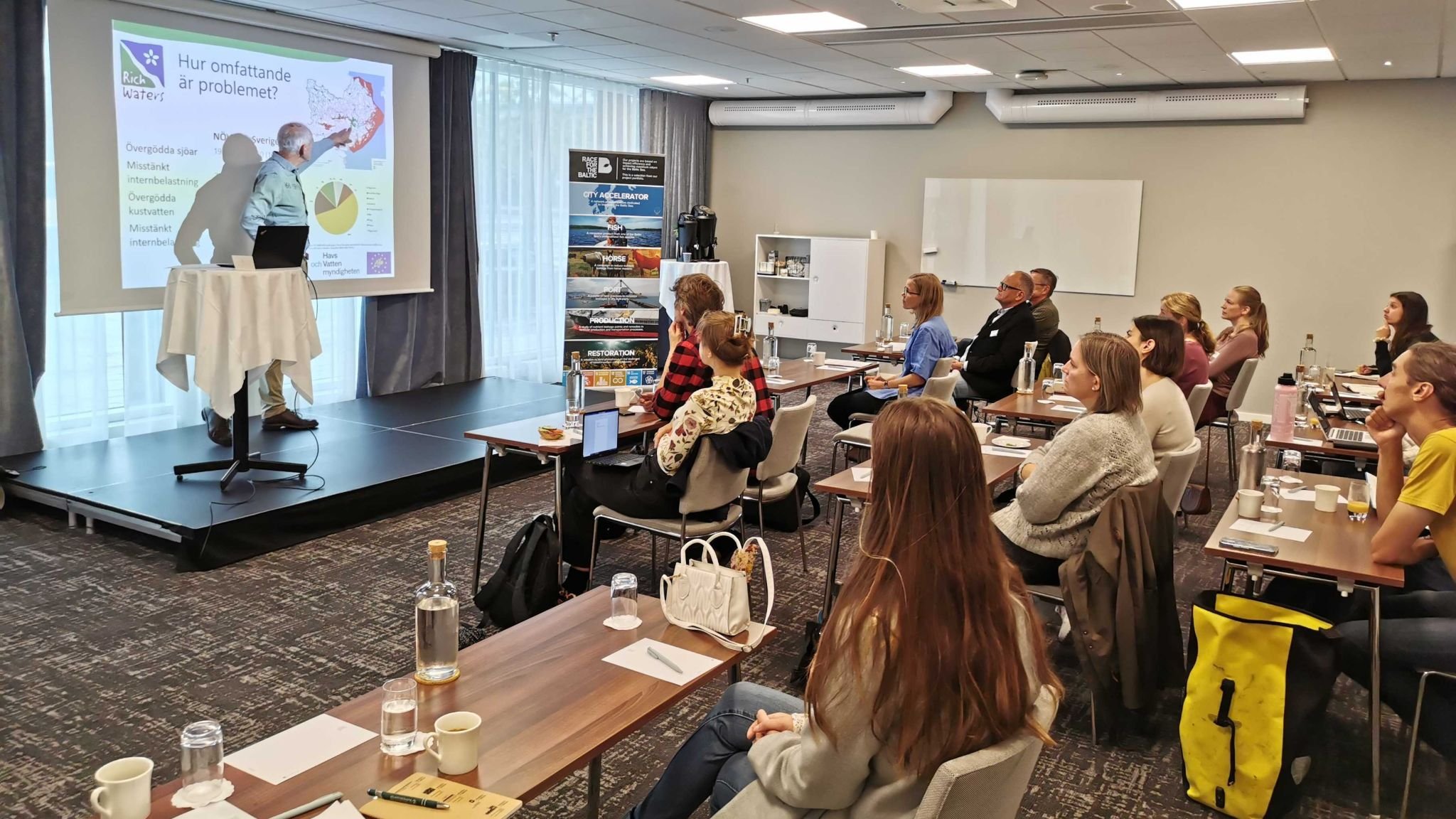Treatment discussions with six municipalities and a successful inspirational day
Ernst Witter presenting at the inspirational day.
In the Restoration Project we have now had discussions with six municipalities that have shown interest in aluminium treatment of lakes and bays. One of those municipalities has taken a decision to treat a coastal area. In Q322 the Restoration Project also held an inspirational day on internal load in Uppsala, an event that has been followed by many fruitful meetings and discussions with municipalities in the area.
Out of our ongoing discussions with 6 municipalities that are interested in aluminium treatment of lakes and bays, one municipality has taken a decision to treat a coastal area, but the treatment is likely to be performed in 2024/25. This is due to long lead times stemming from other water projects in the same area.
Inspirational day for measures against eutrophication
The Restoration Project held an inspirational day in Uppsala 13th of September, where presenters talked about eutrophication, internal load, and relevant measures that can be taken and has been taken in the area. It was an appreciated day with many interesting discussions that continued afterwards. The material from Uppsala can be found here.
Race For The Baltic is part of group discussing treatments of internal load
Since we are financing a study with SLU that is part of the EU Life Rich Waters, we are part of the working group relating to internal load. We participated in a workshop in September, where current research regarding internal load and results of different measures were discussed.
Race For The Baltic is part of one of the projects since we were granted 1,1 million SEK for Lokala vattenvårdsprojekt (LOVA) from Blekinge Länsstyrelse to conduct a project together with Brian Huser at SLU that is co-financed with EU Life Rich Waters. The purpose of our project is to further develop a national model that has been developed within the EU project to assess and reduce the internal load of phosphorus in Swedish lakes. The collected data in our project will be used to further develop the tool to also include brackish water environments in coastal areas in the Baltic Sea. The goal is that it will be possible to use the tool also for decisions on measures to be taken against internal load in bays. A white paper is now published, with the purpose of guiding municipalities and other stakeholders on how to determine if there is risk for internal load and what measures to take.
We are now part of the communication working group discussing how we will get this information out to municipalities and other stakeholders.
The white paper can be found here.

